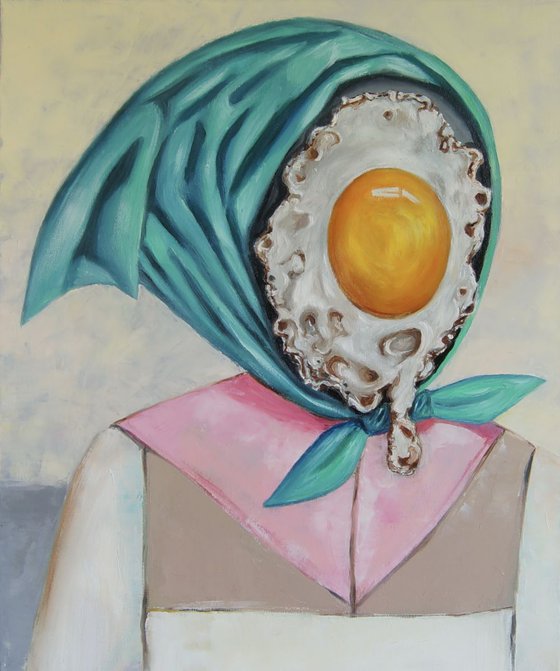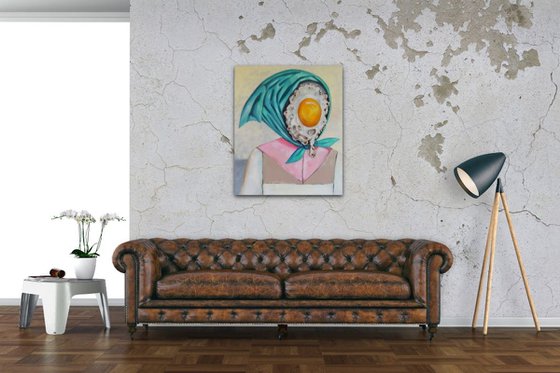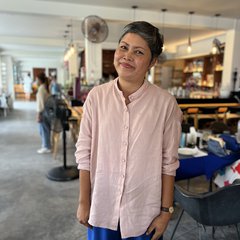Main Navigation
Original artwork description:
I am delighted and honoured to be mentioned in an article alongside Banksy and Hockney in The Daily Mail on Sunday 20th April 2025 by Toby Walne.
In April 2017, I wanted something to change my world, a painting that would make that happen. I wanted something I’d never seen before in the art world. I used to sit for hours late at night thinking about what to paint to make that change.
It was an Egg lady wearing a scarf 60 x 50cm who made that change. I sold it for $330; now, to buy that size, the price would be $1,465. My Eggs are hanging on walls worldwide, and I recently sold Egg Island 130 x 180 cm for $18,400.
Materials used:
Gesso & Oil
Tags:
#oil painting #figurative #abstract #contemporary #blue #expressionism #lady #impressionismEgg Lady (2017) Oil painting
by Ta Byrne
142 Artist Reviews
£250 Sold
- Oil painting on Canvas
- One of a kind artwork
- Size: 50 x 60 x 2cm (unframed) / 50 x 60cm (actual image size)
- Ready to hang
- Signed on the front
- Style: Abstract
- Subject: People and portraits
Do you like this artwork?
This artwork has sold, but the artist is accepting commission requests. Commissioning an artwork is easy and you get a perfectly personalised piece.
Loading
Original artwork description
I am delighted and honoured to be mentioned in an article alongside Banksy and Hockney in The Daily Mail on Sunday 20th April 2025 by Toby Walne.
In April 2017, I wanted something to change my world, a painting that would make that happen. I wanted something I’d never seen before in the art world. I used to sit for hours late at night thinking about what to paint to make that change.
It was an Egg lady wearing a scarf 60 x 50cm who made that change. I sold it for $330; now, to buy that size, the price would be $1,465. My Eggs are hanging on walls worldwide, and I recently sold Egg Island 130 x 180 cm for $18,400.
Materials used:
Gesso & Oil
Tags:
#oil painting #figurative #abstract #contemporary #blue #expressionism #lady #impressionism14 day money back guaranteeLearn more


